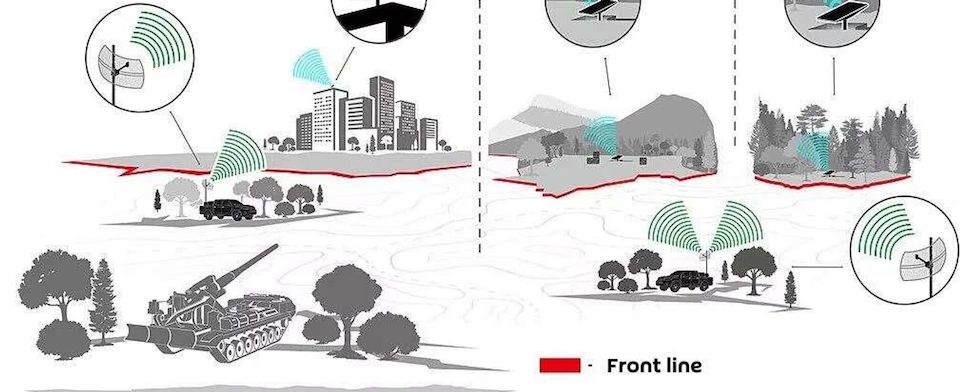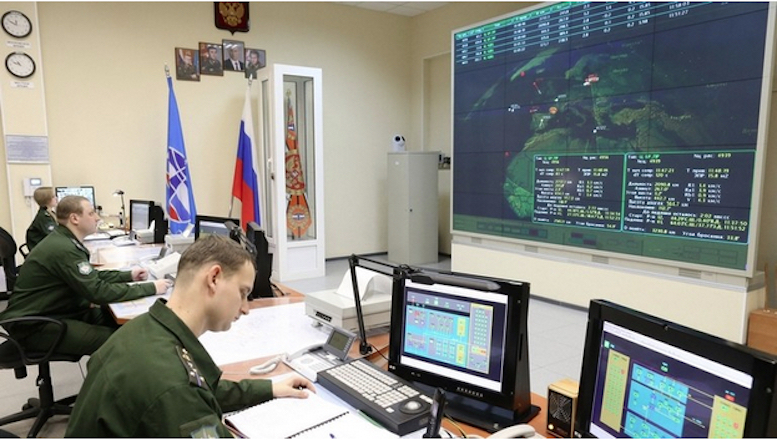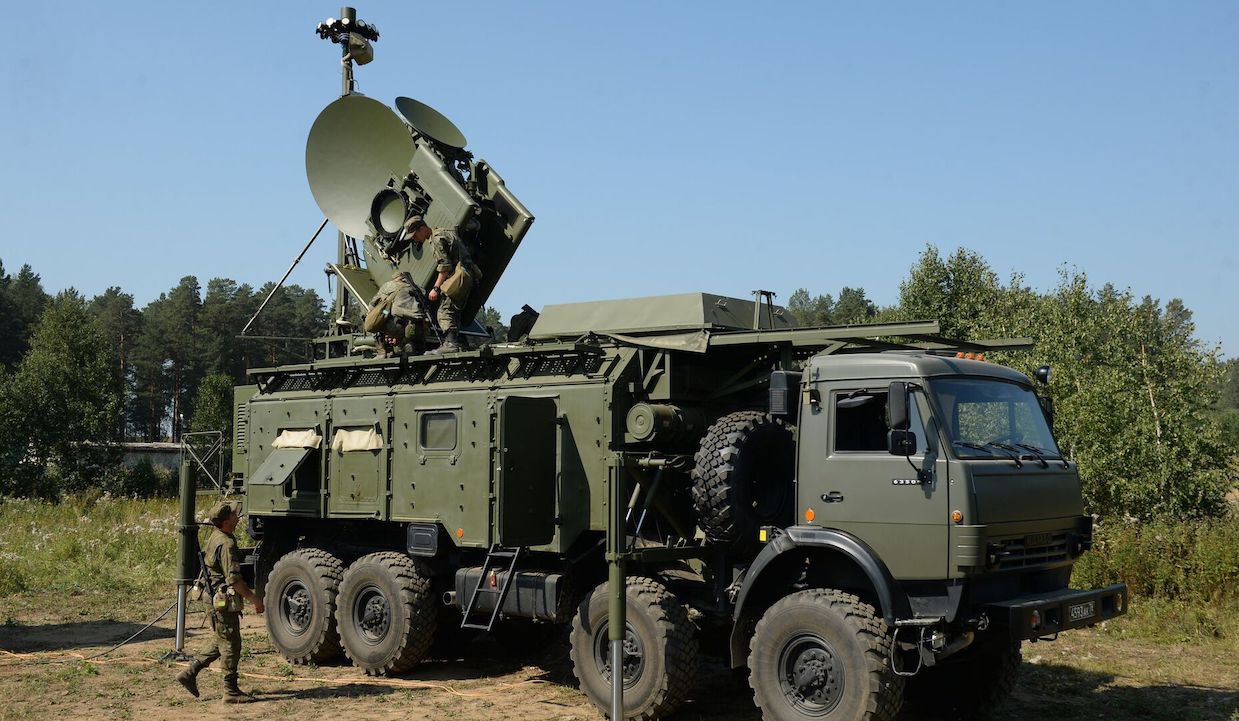Ukraine’s stocks of American-made Ground-Launched Small Diameter Bomb (GLSDB) munitions are being jammed by Russian electronic warfare equipment, three informed sources familiar with the ‘problem’ told Reuters.
The Boeing/Saab Group-developed GLSDB is a ground-launched variant of Boeing’s GBU-39 Small Diameter Bomb – a 129 kg glide munition with a 93 kg fragmentation warhead and a 150 km range designed for strikes against heavily entrenched targets.
The GLSDB can be fired from M270 and M142 HIMARS precision multiple launch rocket installations – which the United States began delivering to Ukraine in mid-2022, and which Russian forces initially had difficulties locating due to the systems’ rapid shoot-and-scoot [the ability to come out of cover, quickly fire and go back into hiding] capabilities.
GLSDBs began to be sent to Ukraine in early 2024 in a bid by the Pentagon to extend Ukraine’s long-range strike potential, which Kiev has used to target both military and civilian targets in the Donbass and elsewhere.
Reuters’ sources said Russian jamming equipment has been targeting the GLSDB’s GPS-supported inertial navigation system, dramatically reducing its effectiveness. One of the sources said it would take Boeing “months” to fix the problem. The report did not provide details on what percentage of the long-range weapons had rendered useless by Russian efforts.
The GLSDB is just one of the systems Ukraine’s NATO-backed forces have faced problems with thanks to Russian electronic warfare measures. Daniel Patt, a senior fellow at the Hudson Institute, told Congress in March that the effectiveness of US 155 mm GPS-guided Excalibur artillery shells had dropped from 70 percent to just six percent several weeks after being delivered to Kiev after Russian forces fine-tuned their electronic warfare equipment against them.
Sci-Fi Becomes Reality: Russian Laser Weapons Successfully Tested in Ukraine Battleground (video)
The bad news for the Pentagon regarding the GLSDB’s performance against a peer adversary comes on the heels of a New York Times reportthis week citing Ukrainian officials, electronic warfare specialists and frontline troops indicating that Russian electronic warfare had successfully jammed SpaceX’s Starlink satellite internet terminals en masse in Kharkov region. This, the sources said, helped Russia achieve an element of surprise for its offensive in the area to establish a “sanitary zone” free of Ukrainian long-range strike systems, which Ukraine’s forces had been using this spring to target the city of Belgorod and border settlements.
“We’re losing the electronic warfare fight,” a deputy commander from the Ukrainian 92ndAssault Brigade’s drone battalion said. “One day before the attacks, it just shut down. It became super, super slow.”
Russia Muting Musk’s Starlink Satellites Using Sophisticated Electronic Warfare Tools
SpaceX CEO Elon Musk confirmed in an X post Friday that his company has been forced to spend “significant resources combating Russian jamming efforts,” and characterized Russia’s electronic warfare capabilities as “a tough problem.”
Russia has been forced to dramatically strengthen its electronic warfare capabilities amid the Ukrainian crisis, owing to the use of precision-guided NATO munitions and drones on a previously unparalleled scale.

This has included everything from the jamming of guided artillery shells and extended-range Joint Direct Attack Munition (JDAM) kits, to confusing long-range drones and disorienting missiles. Russia’s military is also doing its best to stay ahead of the curve on the battlefield, with an informed source telling Sputnik last October that EW troops were tweaking their equipment to prepare to suppress Ukraine’s F-16s once they begin arriving later this year.
Russia’s commitment to powerful electronic warfare capabilities dates back to the second half of the 20th century, when, amid preparations for a possible large-scale conflagration with NATO in the heart of Germany, Soviet military doctrines began emphasizing the need for “total integration of electronic warfare and physical destruction resources” on the battlefield. These developments have been consistently expanded and improved upon over the decades – with Russia, unlike the US, never losing focus on the creation of electronic warfare means against peer competitors.
Originally published by Ilya Tsukanov on Sputnik International
All links to Gospa News articles have been added in the aftermath
Ukraine attacked key element of Russia’s nuclear umbrella
The US should be seen as directly responsible for a Ukrainian strike on a key element of Russia’s nuclear umbrella, Senator Dmitry Rogozin has said, warning that such attacks could lead to the collapse of the entire global nuclear security architecture.
In a statement on Telegram on Saturday, Rogozin, a senator who previously headed up the Russian space agency Roscosmos and is now in charge of a military technical center called Tsar’s Wolves, said that the attack targeted a nuclear early warning system in the southern Krasnodar Region. The Russian Defense Ministry has yet to comment on the matter, while the extent of the damage remains unclear.

Rogozin suggested that it was extremely unlikely that the strike, which Ukrainian media reported involved several drones, was carried out at Kiev’s sole initiative and without US involvement.
According to the senator, Washington has always sought to achieve military superiority over Moscow since the very dawn of the nuclear age, but this rivalry was mostly limited to a battle of minds between scientists, strategists, and policymakers.
NATO-KIEV Terrorism becomes Nuclear Nightmares after Drones Attack on Zaporozhye Atomic Plant
This seems to have changed, however, as “the US has commissioned a crime by hiring an irresponsible bandit” to attack Russia’s early warning system, the official said, apparently referring to Vladimir Zelensky.
The attack apparently targeted an advanced Voronezh radar station in the city of Armavir, which went into operation in 2013. The system can detect incoming cruise and ballistic missiles at a range of 6,000km and can track up to 500 targets. During the inauguration of the system, Russian President Vladimir Putin said that it would significantly increase the country’s defense capabilities in the southern and southwestern directions.
Extract from RT (Former Russia Today)
All links to Gospa News articles have been added in the aftermath
https://www.gospanews.net/en/2024/04/19/bombshell-9-11-plandemic-moscow-massacre-black-man-of-cia-intrigues-alongside-biden-jr-in-ukrainian-company-accused-of-financing-crocus-terrorists/
British Facilities in the Russia Army’s Sight. Moscow Nuclear Drills as Message to Western
Yemen strikes three Israeli-linked Ships with Ballistic Missile. The First One in Mediterranean Sea





2 pensieri su “Electronic WARFARE: Russia Jammed Ukraine’s Long-Range NATO Glide Bombs and Musk’s Starlink Satellites. Kiev the Moscow Nuclear Umbrella”